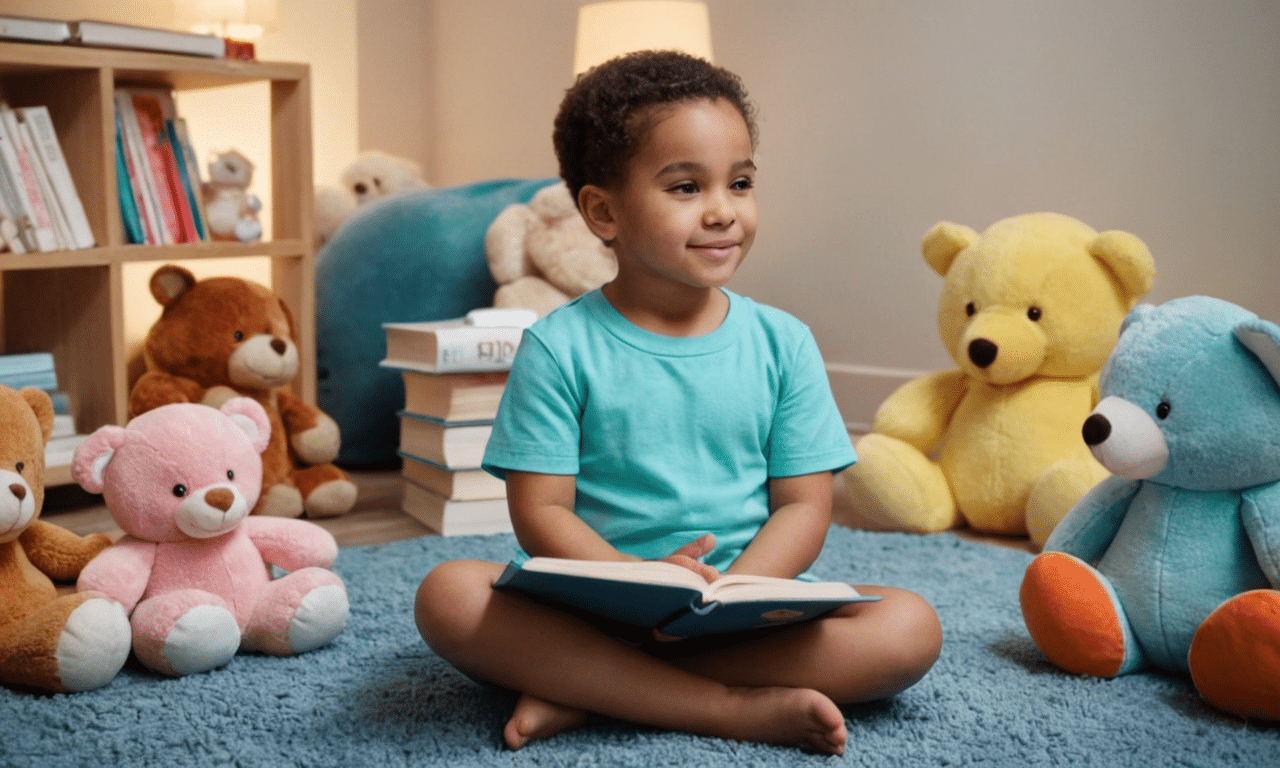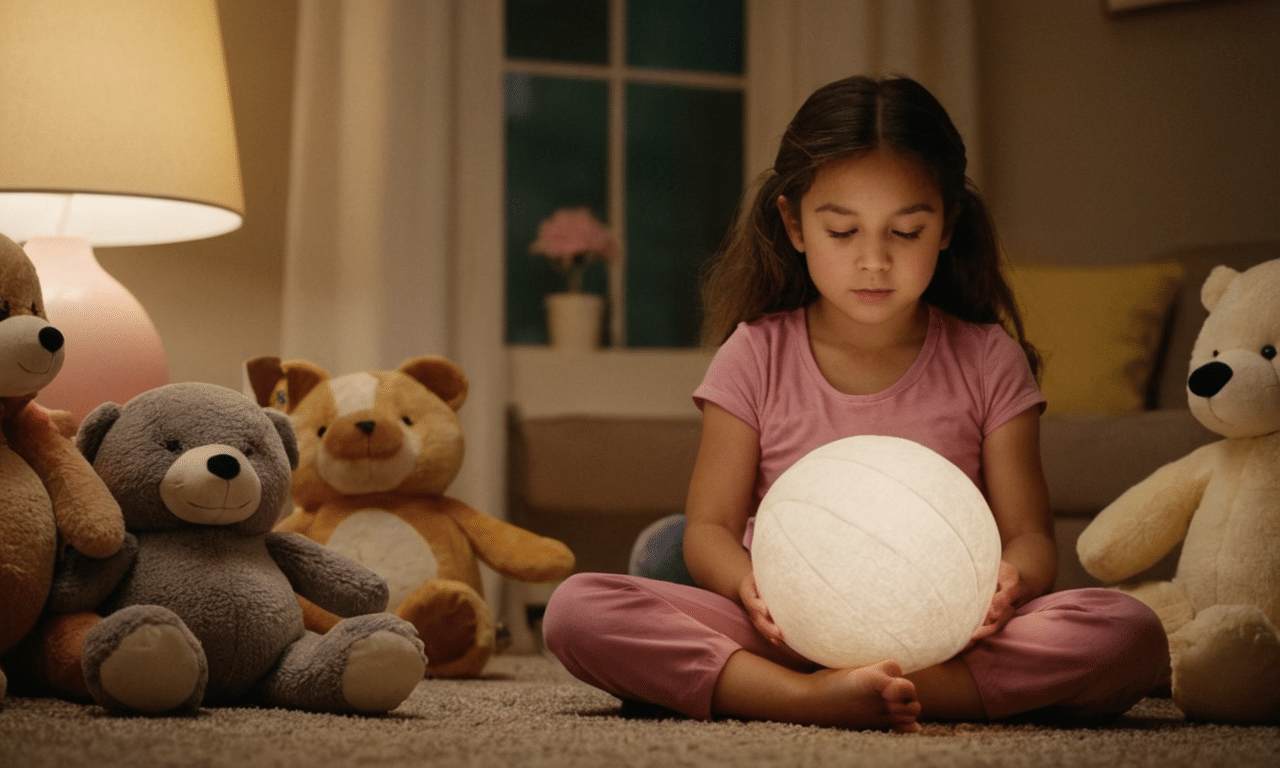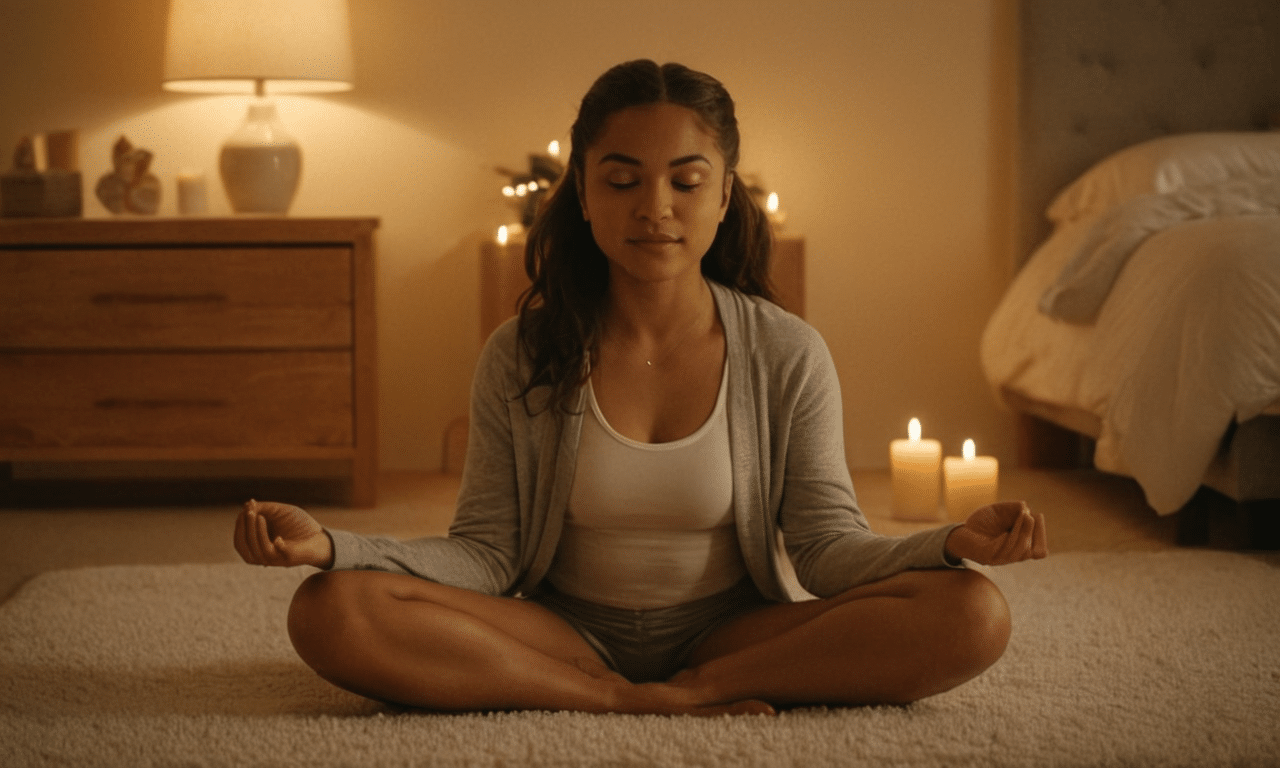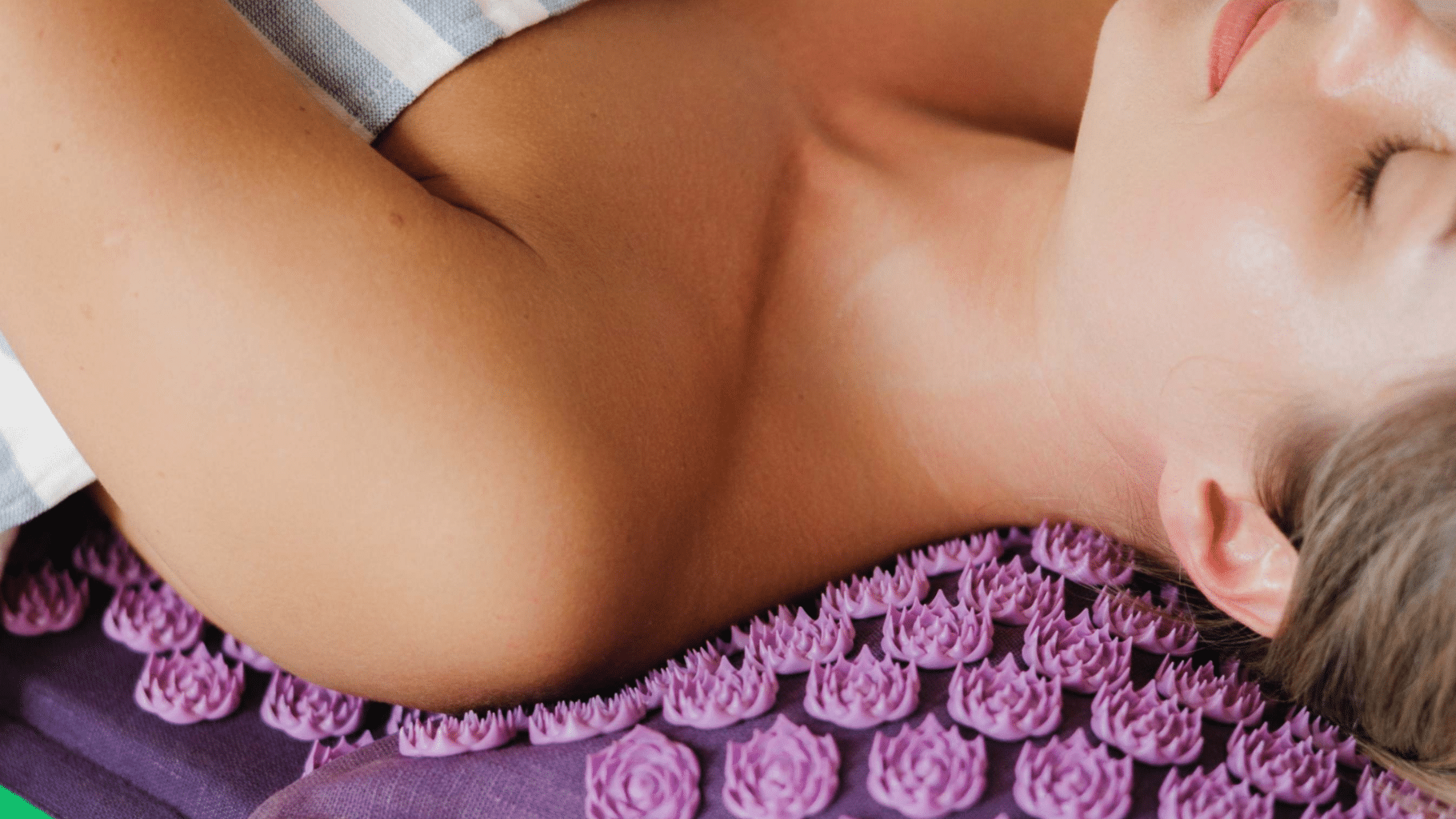As kids navigate the complexities of growing up, it’s not uncommon for them to experience stress, anxiety, and sleep problems. But what if there was a simple, yet powerful tool to help them manage these emotions and develop healthy habits from an early age? The answer lies in progressive muscle relaxation, a technique that can be surprisingly beneficial for kids.
How can I effectively teach progressive muscle relaxation to kids?
You can start by explaining the concept of deep breathing and tense-relax cycles using simple language and relatable examples. Use guided imagery or visualization exercises to help them imagine their muscles relaxing, and incorporate fun activities like yoga poses or games that involve slow movements to practice the technique.
Teaching Progressive Muscle Relaxation to Kids
- Simplify Language: Use terms kids understand, avoiding complex jargon.
- Incorporate Imagery: Use scenarios, games, or storytelling to engage kids.
- Make it Interactive: Incorporate pretend play, role-playing, or imagination exercises.
- Focus on Feelings: Emphasize how relaxation can help with stress and anxiety feelings.
- Use Technology Wisely: Leverage apps, videos, and wearable tech to enhance learning experiences.
- Prioritize Consistency: Regular practice reinforces positive habits and benefits.

Benefits of Progressive Muscle Relaxation for Kids
Progressive muscle relaxation for children can significantly reduce stress. Kids today face pressures from school, social situations, and extracurricular activities. Learning to manage stress early can set the stage for healthier adult life. By practicing these relaxation techniques, children can experience immediate relief and better handle future stressors.
Additionally, progressive muscle relaxation can ease anxiety in young ones. Children often struggle to articulate their feelings of worry, and these exercises help by providing a physical way to release tension. With regular practice, kids may become more resilient to anxiety-inducing situations and maintain a calmer demeanor.
Sleep problems are common among children, but progressive muscle relaxation can offer a solution. When engaging in these exercises before bedtime, kids can find it easier to slow down their thoughts and relax their bodies. This can lead to improved sleep quality and duration. For more on related relaxation techniques, check out more relaxation techniques here.
Tips for Teaching Progressive Muscle Relaxation to Kids
When teaching progressive muscle relaxation to kids, start by keeping things simple. Use terms that they can understand and relate to, avoiding complex jargon. Explain that they will be tensing and then relaxing various muscle groups to help their bodies feel better. You might say something like, “We’re going to pretend our body is a piece of spaghetti, first as a stiff stick, then as a floppy noodle.”
Incorporate imaginative elements and games to make the experience engaging. For instance, use a progressive muscle relaxation script for kids themed around favorite animals or superheroes. Ask them to pretend they are squeezing lemons in their fists or crawling like a cat, which can make the entire process more enjoyable and relatable.
Finally, consistency is key. Aim to practice these exercises regularly, perhaps making it a part of their bedtime routine. Repetition helps them understand the practice’s benefits, and they will likely notice how much better they feel. Regular practice can also improve their ability to cope with stress and anxiety. Check out more detailed information about progressive muscle relaxation here.
Simple Exercises for Progressive Muscle Relaxation in Children
Start with a basic exercise like “The Apple.” Ask children to curl their toes as if they are picking up an apple with their feet. Hold this tension for about five seconds, then release it while imagining dropping the apple. Repeat this a couple of times for both feet. This exercise helps them understand how tensing and releasing muscles work.
Next, introduce “The Turtle.” Instruct children to pull their shoulders up to their ears, as if they’re trying to hide in their shell. Hold the tension for a few seconds and then slowly release it. Explain to them that just like a turtle, they can come out of their shell when they feel safe and relaxed. This helps in making the concept tangible.
A favorite among many is “The Balloon.” Ask kids to imagine they are filling up a balloon by taking a deep breath and puffing out their cheeks. After holding their breath for a brief moment, they can “pop” the balloon by exhaling forcefully and relaxing their cheeks. This exercise combines breathing with muscle relaxation, offering dual benefits.
Using Technology to Enhance Progressive Muscle Relaxation for Kids
Technology can be an excellent ally in making progressive muscle relaxation more accessible to children. There are several apps designed specifically for guided relaxation exercises that include friendly animations and sounds. These apps can make the process more interactive and captivating for young minds.
Moreover, videos available on streaming platforms can be useful. Many of these videos feature progressive muscle relaxation for teens and children, often led by engaging instructors who guide them through the exercises step-by-step. Watching others perform these techniques can help kids understand better and feel less isolated in their practice.
Wearable technology such as fitness trackers can also be used to monitor the physical effects of relaxation exercises. Some devices offer biofeedback that can show children how their heart rate and muscle tension levels change with relaxation techniques. This quantifiable data can motivate them to practice regularly, as they can see their progress visually.
| Feature | Description | Importance |
|---|---|---|
| Simple Exercises for Progressive Muscle Relaxation | Briefly explains exercises like “The Apple,” “The Turtle,” and “The Balloon” that help kids understand the concept. | High |
| Incorporating Imaginative Elements | Uses stories, characters, and games to make the experience engaging and enjoyable for kids. | Medium |
| Consistency is Key | PRACTICE REGULARLY TO SEE PROGRESSIVE MUSCLE RELAXATION BENEFITS. | High |
| Technology Integration | Guided relaxation apps, videos, and wearable devices can make progressive muscle relaxation more accessible and engaging for kids. | Medium |
| Tips for Teaching Progressive Muscle Relaxation | Provides simple language, imaginative elements, and consistency in teaching progressive muscle relaxation to kids. | High |

Personal Thoughts
I’ve come to realize that my own experiences with stress and anxiety have been a blessing in disguise. By understanding how I can manage my stress levels effectively, I’ve been able to develop techniques that work for me, including progressive muscle relaxation.
As a result, I feel more grounded and better equipped to handle the stresses of everyday life, from managing teams to caring for loved ones. It’s incredible how something as simple as relaxing my muscles can have such a profound impact on my overall well-being.
Frequently Asked Questions
How do I introduce progressive muscle relaxation to kids?
Progressive muscle relaxation is a simple yet effective technique that can be introduced to kids through guided imagery and visualization exercises. Start by having them find a comfortable position, then guide them through a series of tensing and relaxing exercises, focusing on different parts of the body, such as their toes and fingers. This helps kids develop awareness of their physical sensations and learn to release tension.
What are some fun ways to practice progressive muscle relaxation with kids?
One fun way is to create a “relaxation scavenger hunt” where kids find different objects in nature that represent relaxation, such as a leaf or a feather. Have them use these objects as props while tensing and relaxing different muscles in their body. Another idea is to have kids draw or paint what relaxation looks like to them, then have them tense and relax different parts of their body while describing their artwork.
Can progressive muscle relaxation be used to help kids with anxiety or stress?
Yes, progressive muscle relaxation can be a valuable tool in helping kids manage anxiety and stress. By teaching kids how to recognize and release physical tension, they can develop greater self-awareness and learn healthy coping mechanisms. This technique can also be adapted for use in classroom settings or as part of a larger mindfulness program.
Is there an age limit for teaching progressive muscle relaxation to children?
No, progressive muscle relaxation can be taught to children of all ages, from preschoolers to teenagers. The key is to adapt the language and imagery used to fit the child’s developmental level. For younger kids, you might focus on simple, visual aids like pictures or stuffed animals, while older kids may respond better to more abstract concepts and guided imagery.




